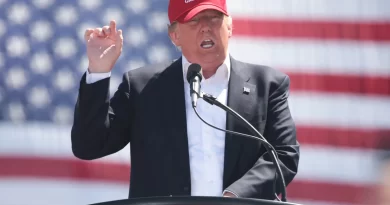Opinion: People can spot fake news. So why do conspiracy theories thrive on social media?
Williams is a political science major originally from Carmel Valley. Ziment is a public policy analysis major, originally from 4S Ranch. Both are students at Pomona College in Claremont.
A new conspiracy theory is gaining traction: Omicron is a variant invented by the Democrats in order to help them in the midterm elections. Pete Hegseth, a Fox News commentator, suggested that you could “count on a variant about every October, every two years.” It’s natural to wonder who would believe ridiculous conspiracy theories like these. Maybe it’s not necessarily a sudden widespread belief in the accuracy of conspiracies, but rather a new digital world that is allowing them to spread and prosper.
This digital world is led by social media, which is the main perpetrator in causing an increasing support for conspiracy theories by driving inaccurate sharing and causing the processing of information to remain at the surface level.
We provide this platform for community commentary free of charge. Thank you to all the Union-Tribune subscribers whose support makes our journalism possible. If you are not a subscriber, please consider becoming one today.
Many assume that political ideology drives belief in fake news and conspiracy theories, and while it’s true that partisanship matters, it isn’t as important as many make it out to be. It’s also not that people are unable to distinguish accurate news from false news. While people are more likely to believe partisan political views with which they agree, studies show that when people are asked to rate true headlines, their ratings are accurate. They may even be more able to assess the accuracy of views of those with politics similar to theirs.
So what actually drives this phenomenon?
It comes down to heuristics (mental shortcuts) and the degree of analytical thinking. The idea that “like goes with like” leads people to believe conspiracy theories because your brain instinctually believes that big causes must have big effects.
The “illusory truth effect” is another heuristic that describes how prior exposure to a fake news headline increases belief later on. The amount of time of exposure to a media can be an extremely influential factor in belief. Psychology researchers Gordon Pennycook and David G. Rand highlight that people’s likelihood to believe in fake news content decreases when they are more reflective and are able to differentiate between truth and falsities. Overconfidence obstructs reflective thinking, leading to more belief in conspiracy theories.
In the tug of war between the intuitive and the rational systems, social media aids in jump-starting processing at the intuitive level. By bypassing deeper processing, support for conspiracy theories is increasing because they are not being fully processed for their accuracy. It is not necessarily that people are not caring about ensuring the accuracy of what they are reading and sharing. Instead, social media is aiding in focusing their attention on other factors that distract from the necessary deeper processing to discern what is truth and what is not.
A recent study found that distractors on social media and their desire to attract followers are all contributing to an increased likelihood of sharing misinformation. For conspiracy theories, increased sharing of media regardless of its veracity means a more prolific message and a wider base for these false stories to grow with. And with more of a following, these stories gain validity, and the self-perpetuating cycle driven by social media feeds the fire of the spread of misinformation.
What is at the crux of this new development is the finding that the form of digital media influences how information is processed. Images or text blurbs, commonly found on platforms like Twitter, are processed quickly and automatically. Thus, the conspiracy theories being presented in this format and on these platforms are being processed more quickly in a less controlled and accuracy-based manner.
These recent findings surrounding the influence of the type of media on processing coupled with the rise to fame in concise and approachable media platforms like Twitter and TikTok are what are breeding an environment in which conspiracy theories are finding greater traction and are thriving now more than ever.
Given all of this, it’s no surprise that research by Xizhu Xiao at China’s Qingdao University and Porismita Borah and Yan Su at Washington State University shows that “social media news use was associated with higher conspiracy beliefs, and trust in social media news was found to be a significant moderator of the relationship between social media news use and conspiracy beliefs.”
So what’s the solution? Studies show that credibility indicators, which fact-check sources and present a rating, reduce false sharing. But this isn’t something that everyday people have control over. What can individuals like you do to combat this effect? Research shows that being an active, thoughtful and open-minded social media user is associated with good online behavior. Before you share something, spend a few seconds simply thinking, “Is this something that you think is true?”



